Abstract
OBJECTIVES. This study used a recent national population survey on childhood and adolescent non-fatal injuries to investigate the effects of recall bias on estimating annual injury rates. Strategies to adjust for recall bias are recommended. METHODS. The 1988 Child Health Supplement to the National Health Interview Survey collected 12-month recall information on injuries that occurred to a national sample of 17,110 children aged 0 through 17 years. Using information on timing of interviews and reported injuries, estimated annual injury rates were calculated for 12 accumulative recall periods (from 1 to 12 months). RESULTS. The data show significantly declining rates, from 24.4 per 100 for a 1-month recall period to 14.7 per 100 for a 12-month recall period. The largest declines were found for the 0- through 4-year-old age group and for minor injuries. Rates of injuries that caused a school loss day, a bed day, surgery, or hospitalization showed higher stability throughout recall periods. CONCLUSIONS. Varying recall periods have profound effects on the patterns of childhood injury epidemiology that emerge from the data. Recall periods of between 1 and 3 months are recommended for use in similar survey settings.
Full text
PDF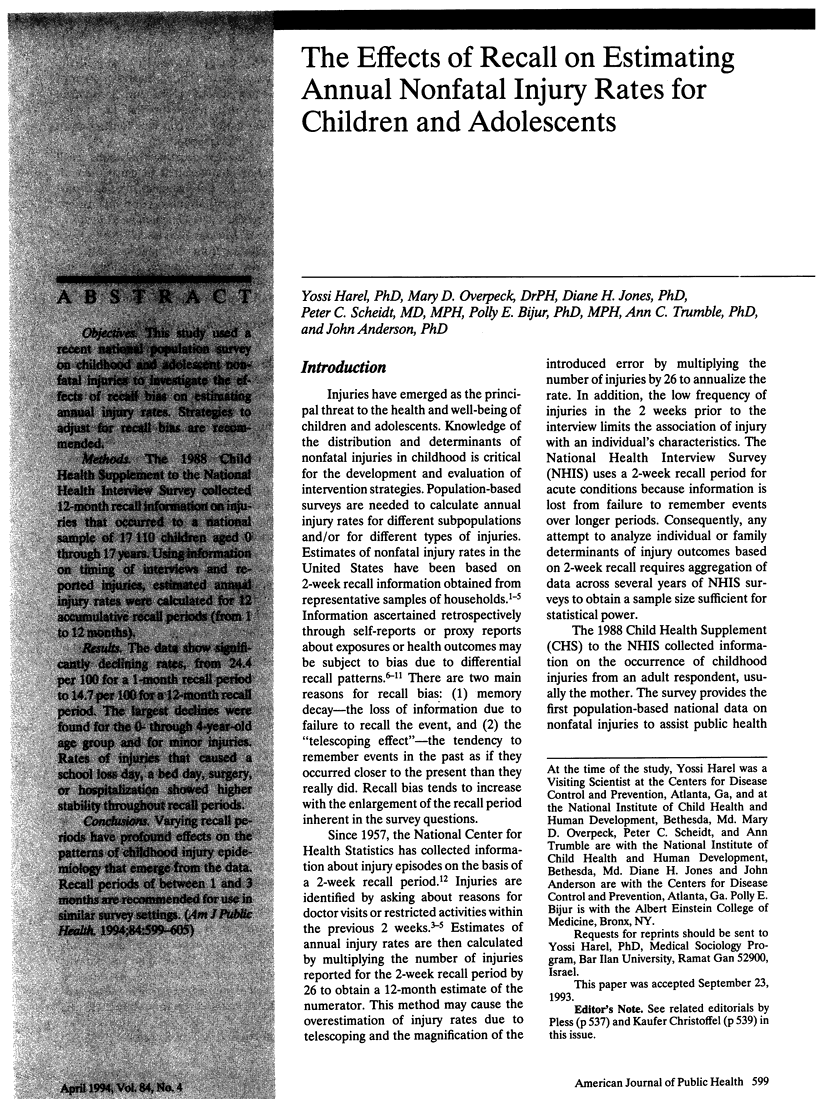
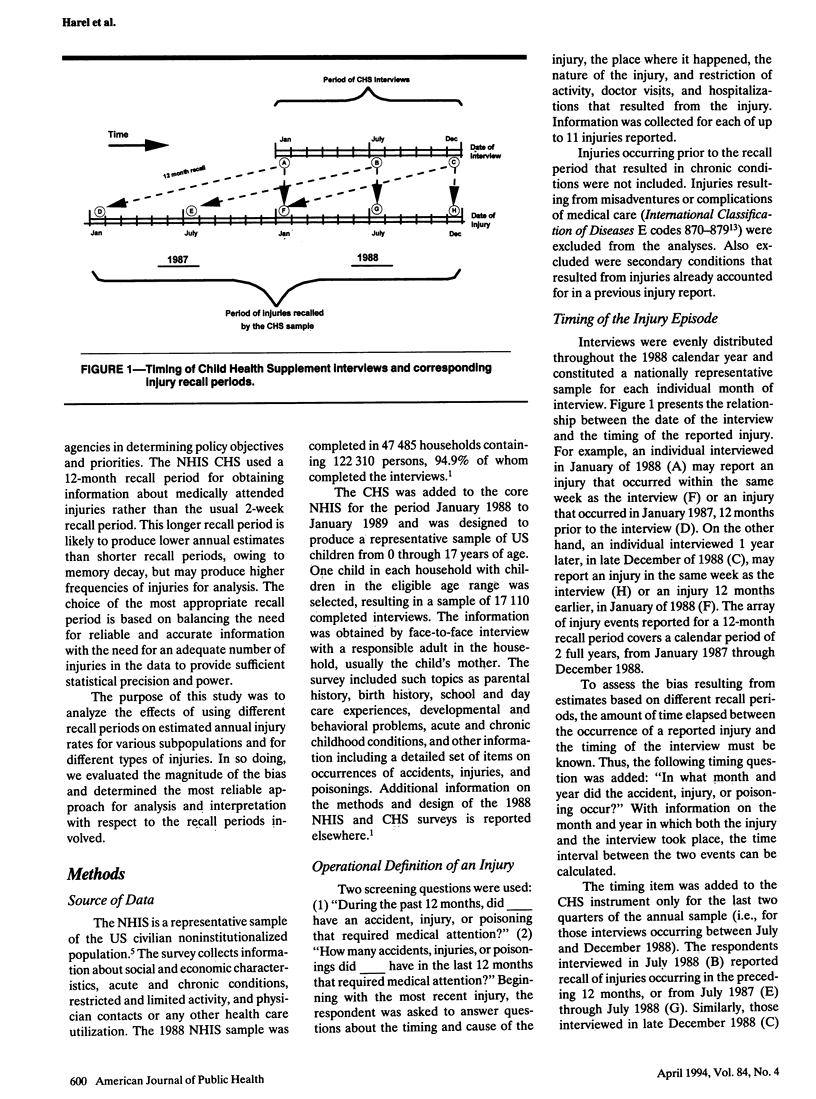
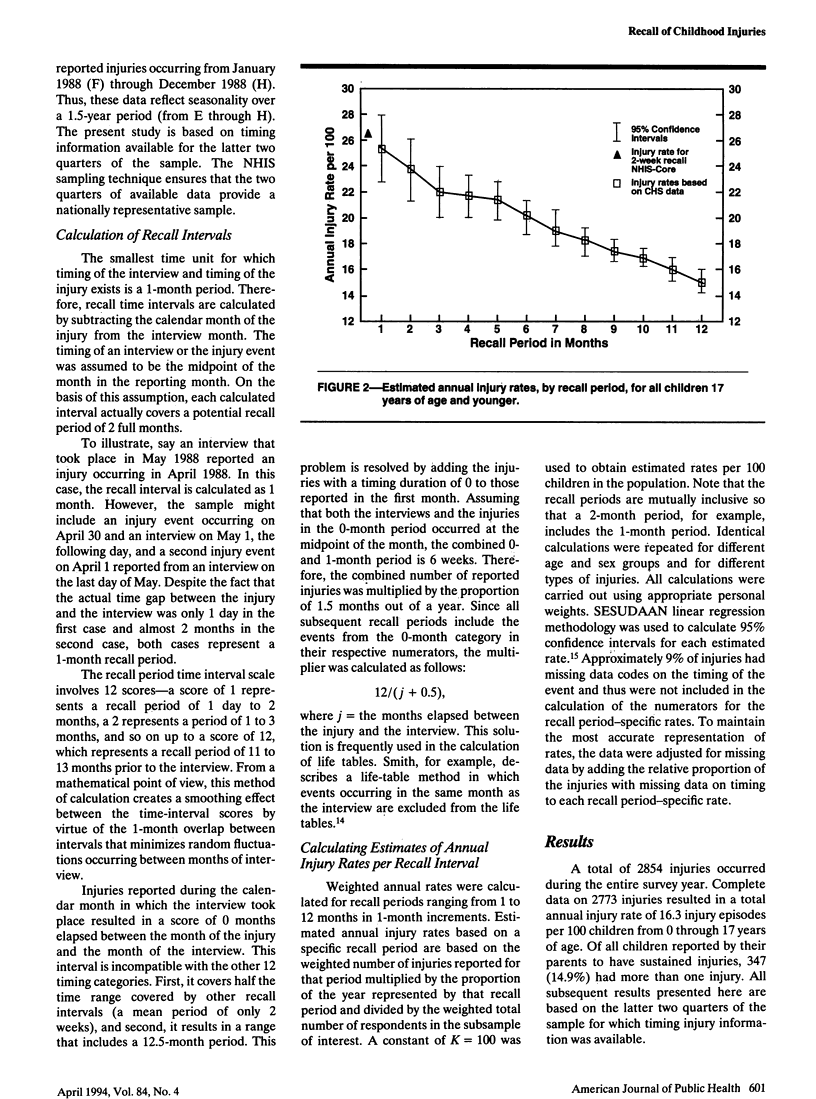
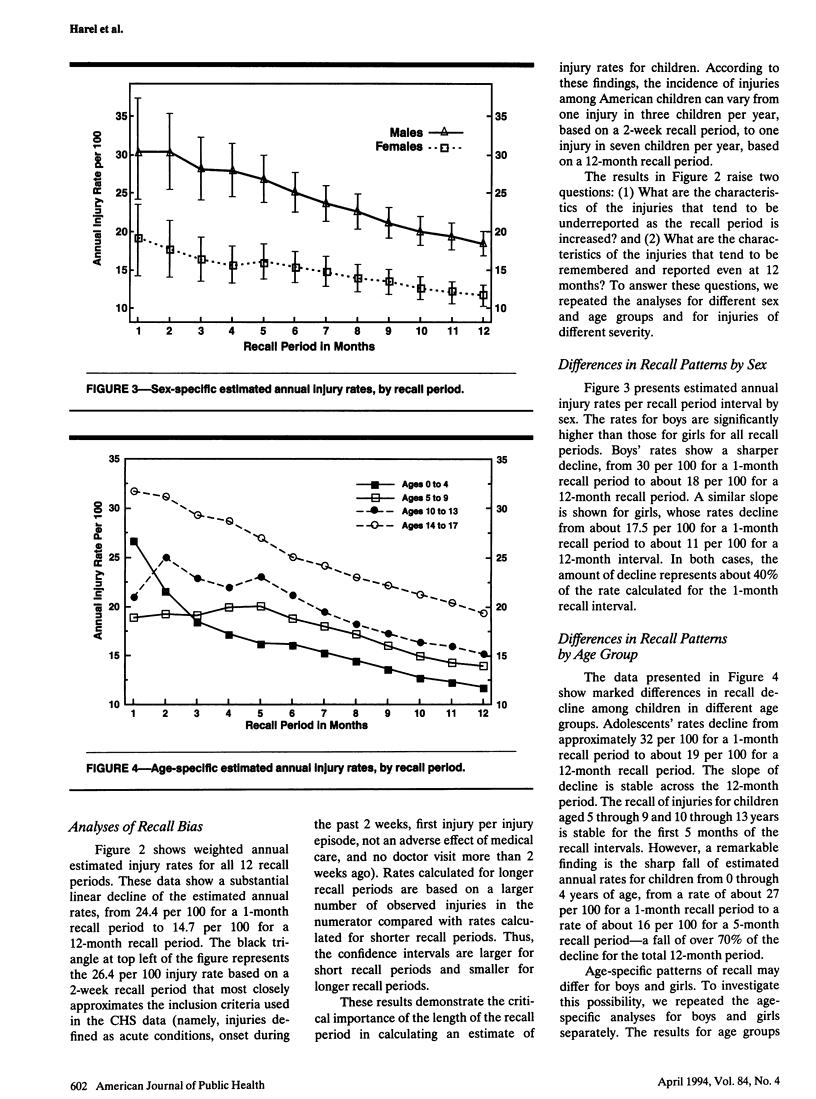
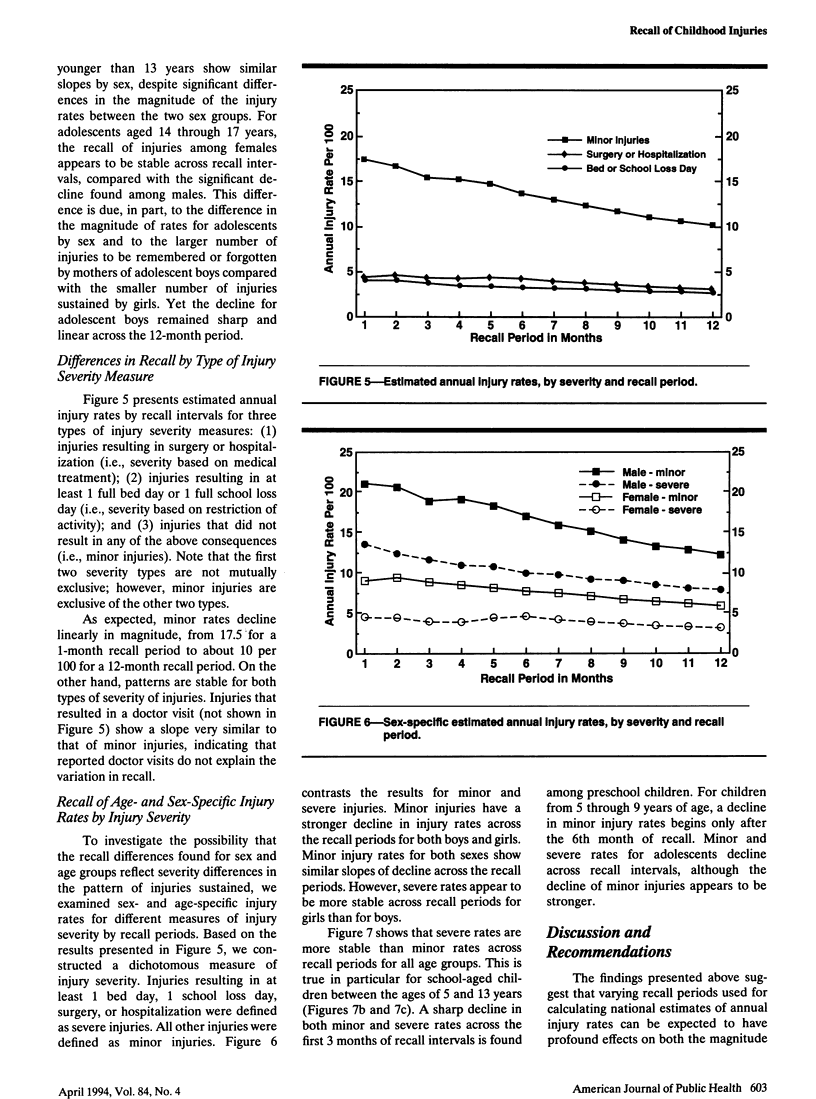


Selected References
These references are in PubMed. This may not be the complete list of references from this article.
- Coughlin S. S. Recall bias in epidemiologic studies. J Clin Epidemiol. 1990;43(1):87–91. doi: 10.1016/0895-4356(90)90060-3. [DOI] [PubMed] [Google Scholar]
- Funch D. P., Marshall J. R. Measuring life stress: factors affecting fall-off in the reporting of life events. J Health Soc Behav. 1984 Dec;25(4):453–464. [PubMed] [Google Scholar]
- Langley J. D., Cecchi J. C., Williams S. M. Recall of injury events by thirteen year olds. Methods Inf Med. 1989 Jan;28(1):24–27. [PubMed] [Google Scholar]
- Mitchell A. A., Cottler L. B., Shapiro S. Effect of questionnaire design on recall of drug exposure in pregnancy. Am J Epidemiol. 1986 Apr;123(4):670–676. doi: 10.1093/oxfordjournals.aje.a114286. [DOI] [PubMed] [Google Scholar]
- Morgenstern H., Kleinbaum D. G., Kupper L. L. Department of Epidemiology and Public Health, School of Medicine, Yale University, New Haven, CT. Int J Epidemiol. 1980 Mar;9(1):97–104. doi: 10.1093/ije/9.1.97. [DOI] [PubMed] [Google Scholar]


